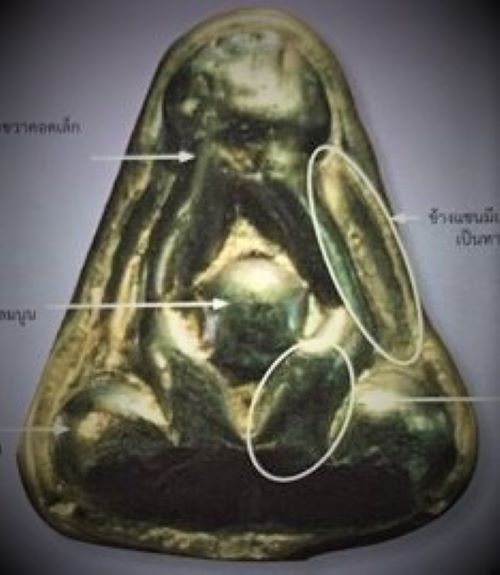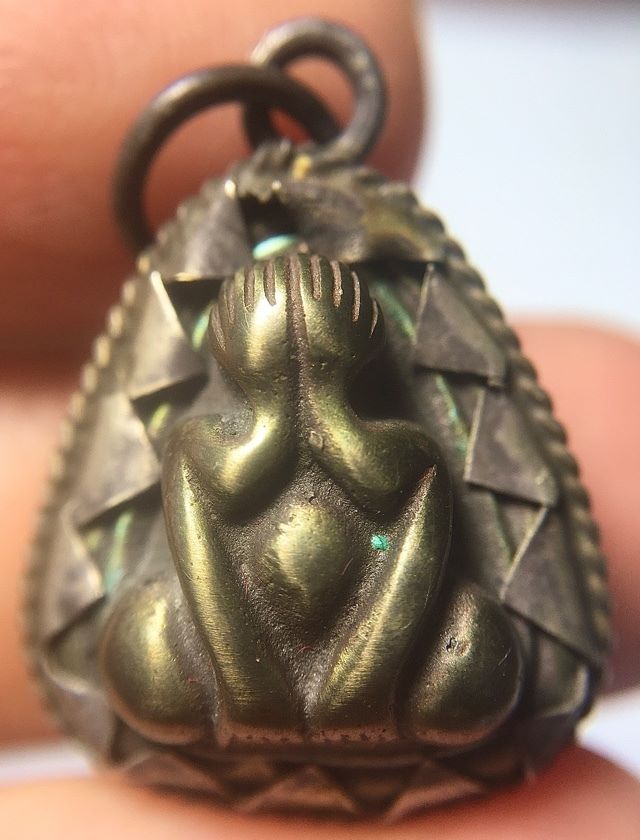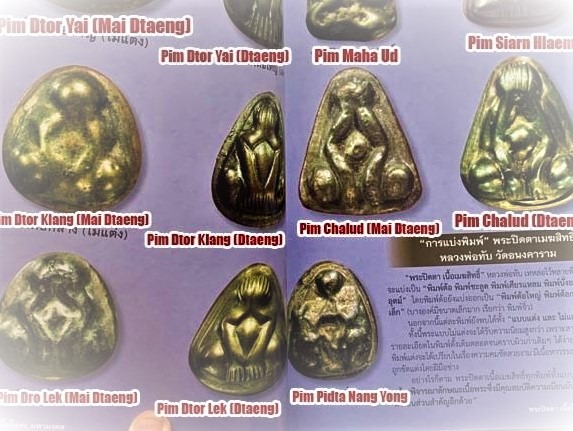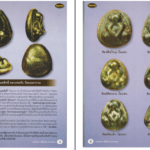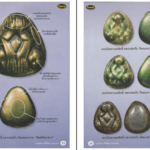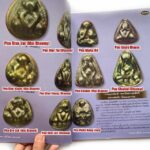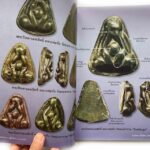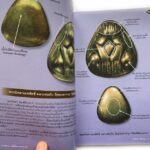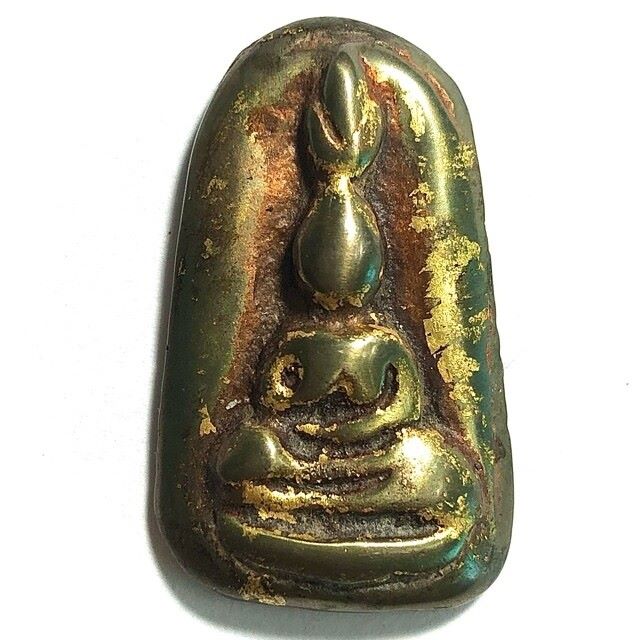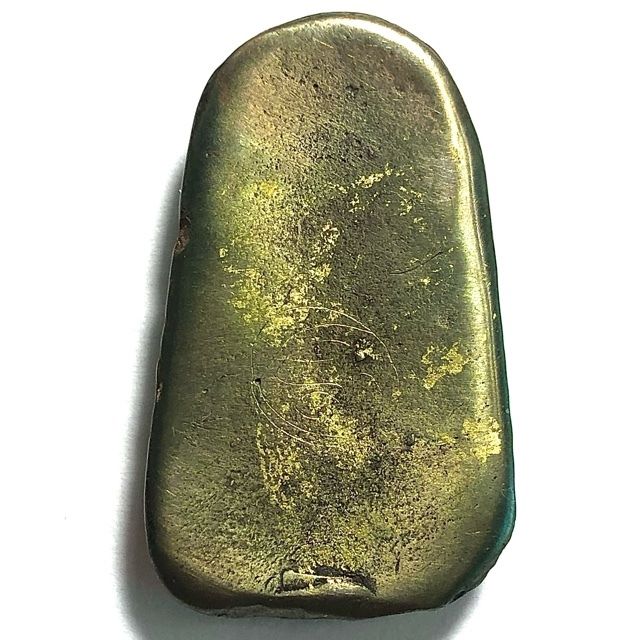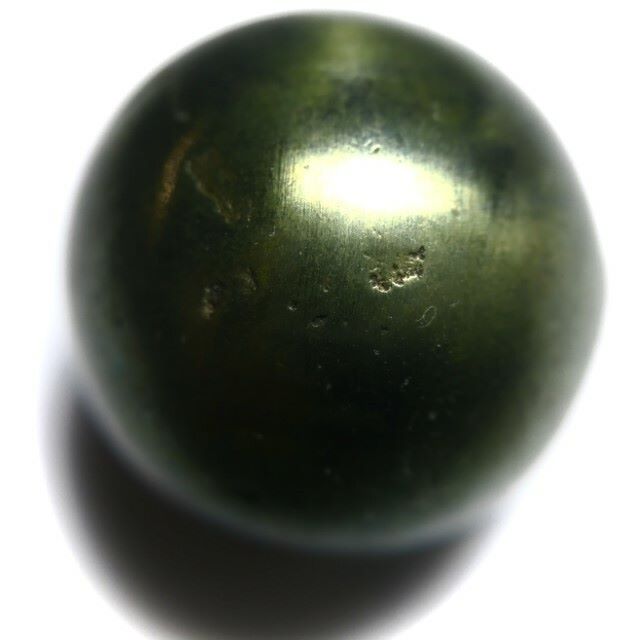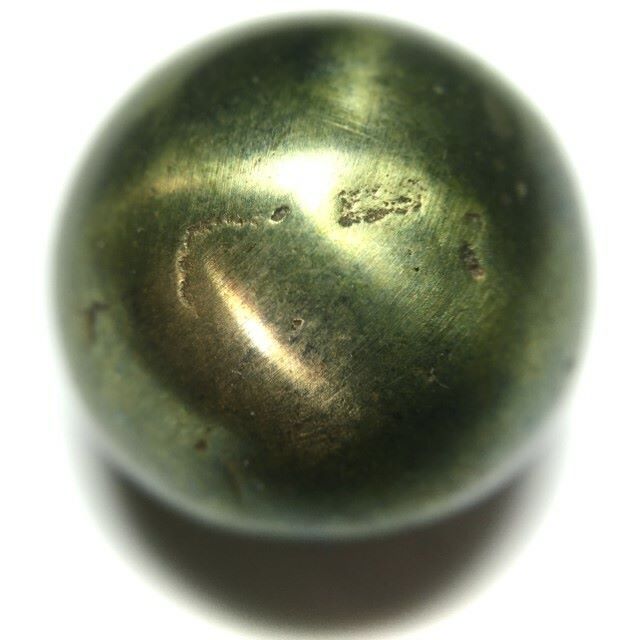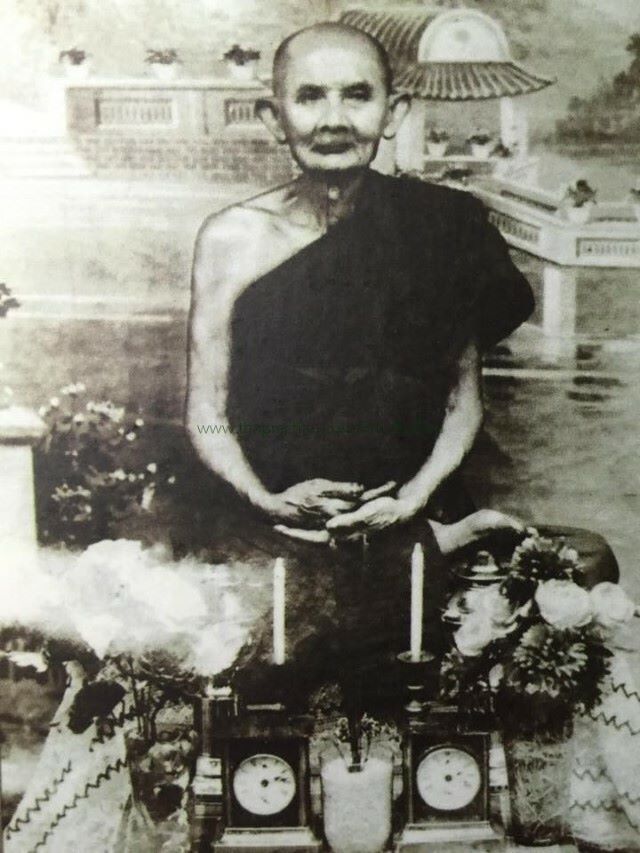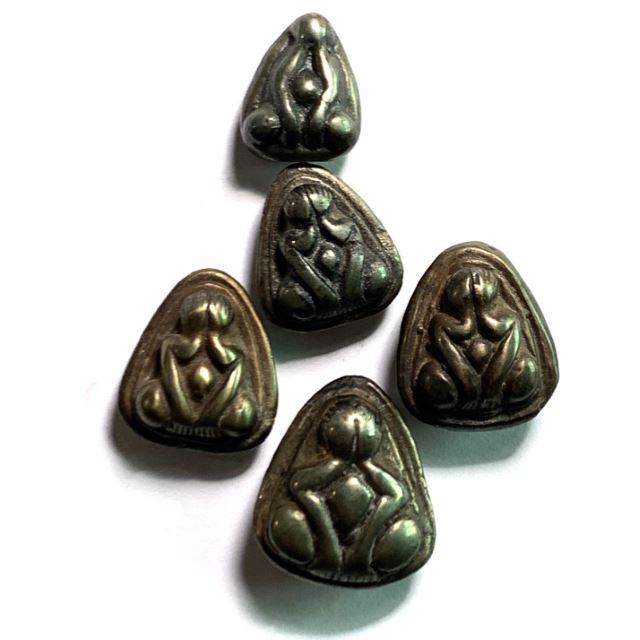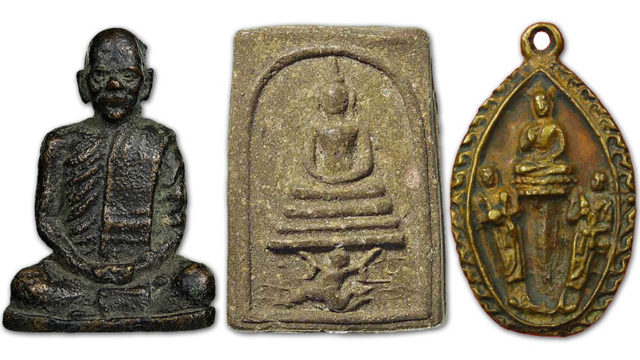Presenting a look at some of the most classic ancient amulets of the great Luang Por Chaeng, of Wat Bang Pang, beginning with the Pra Pong Nam Man series, which Thai Buddhist Folk of Olden days (and the present day), consider the best alternative choice to the incredibly expensive Pra Putta Jao pratap Sadtw Buddha Riding Animal Steeds amulets of the great Luang Por Parn, of Wat Bang Nom Kho; Namely the Pra Somdej Buddha Riding animals amulets of Luang Por Chaeng, of Wat Bang Pang in Nontaburi
Pra Somdej Khee Sadtw, is an ancient amulet of classic fame, released in the year 2484 BE, from one of the Great Guru Masters of the World War II and Indo-China Wartime Era, Luang Por Chaeng (2428 – 2500 BE), of Wat Bang Pang. The Pra Somdej Khee Sadtw amulets consisted of a range of different Buddha images, seated on different animal steeds made by Luang Por Chaeng.
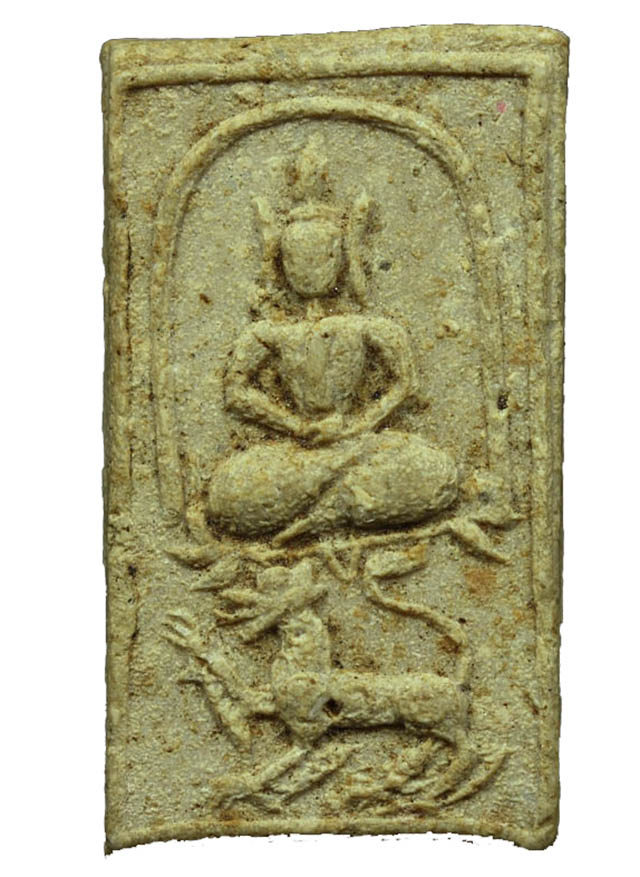
Pra Somdej Khee Graisorn – Buddha Riding a Singha Graisorn Himapant Lion-Eagle
The Buddha riding animals series are considered to be his most popular amulets in present times, followed by the Pra Kring, and his famous Pra Sivali, and the Ganha Chali, which are also only rarely to find in the public auctions, as devotees and collectors have gathered most of the last remaining amulets in circulation..
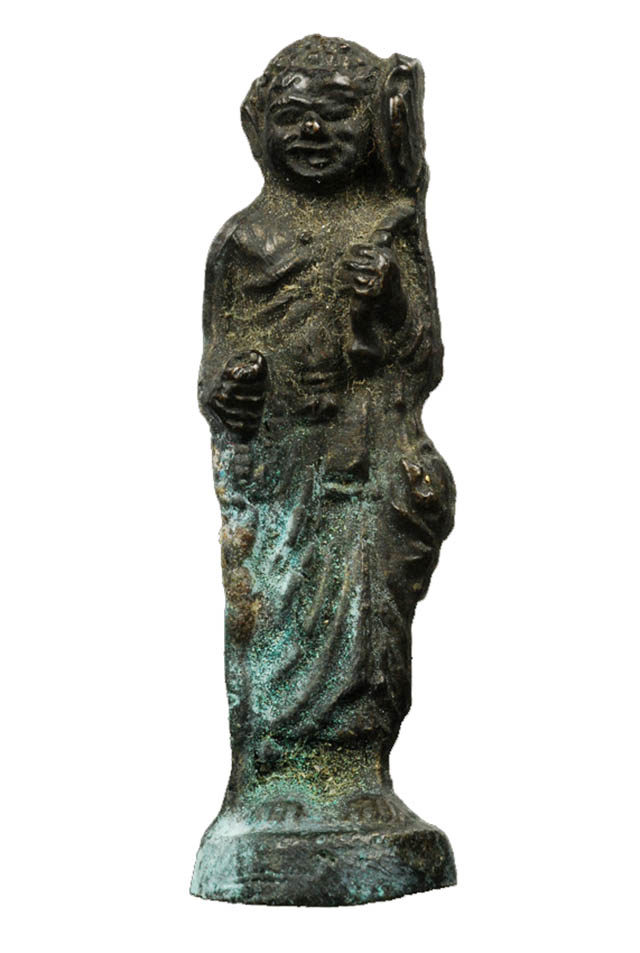
Roop Lor Pra Sivali Loi Ongk Statuette Luang Por Chaeng
The Pra Somdej Khee Sadtw Buddha Riding Animals amulets of Luang Por Chaeng are considered to be the perfect alternative to the much more expensive Pra Putta Jao Pratab Sadtw amulets of Luang Por Parn (Wat Bang Nom Kho), and are indeed seen to be equally powerful, but much less expensive.
-
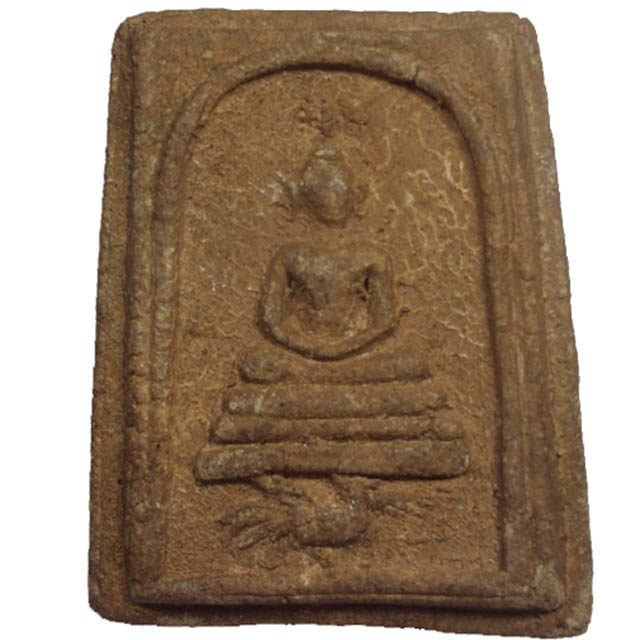
-
Pra Somdej Khee Gai Buddha Riding a Cockerel amulet in Nuea Wan
-
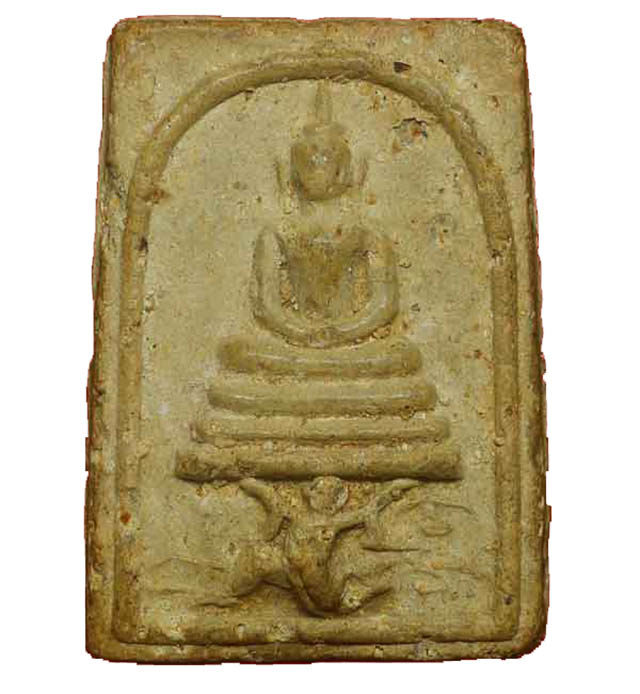
-
Pra Somdej Khee Hanuman Buddha Riding Vanora God in Nuea Pong Nam Man
Pra Somdej Song Suea – Buddha Riding a Tiger
The front face of the amulet below features an image of a Buddha seated in the Samadhi posture meditating on the branch of a tree, above a tiger, who is prowling around in the forest below the Buddha. The amulet is made from Nue Pong Nam Man Oily Herbal Pollens, with Pong Lob Yantra Powders.
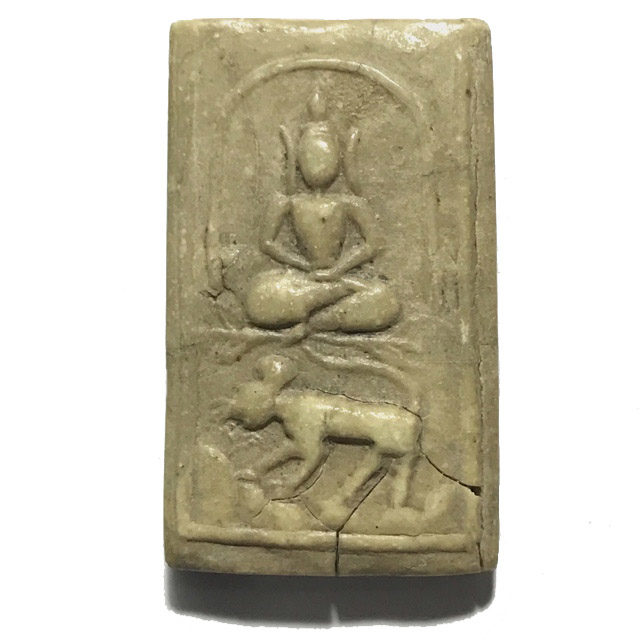
Pra Somdej Song Suea Buddha Riding Tiger Amulet in Nuea Pong Nam Man
Biography of Luang Por Chaeng Sīlapanyā, of Wat Bang Pang
Luang Por Chaeng, Silapanya was born on a Friday on the 18th December 2428 BE. He was ordained in 2440 at the age of 12 as a Samanera Novice Monk, and remained ordained until the age of 20, when he was then ordained up one level to the status of a fully fledged adult Bhikkhu Monk. Luang Por Chaeng was a Pra Gaeji Ajarn Master Monk of the second World Wartime, of great importance in Thai History. He was highly reputed Master of Vipassana Kammathana practice, whose Mastery was heard of far and wide.
-
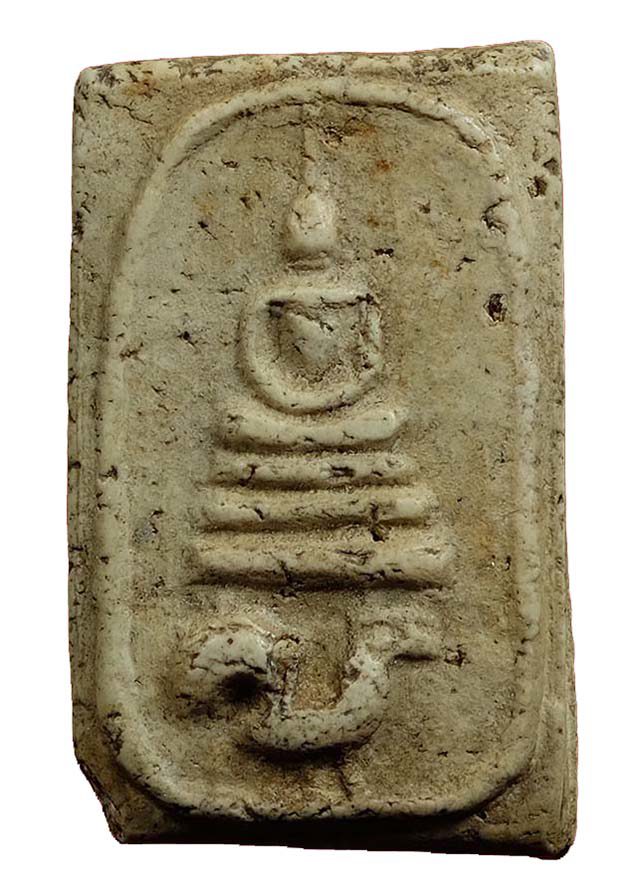
-
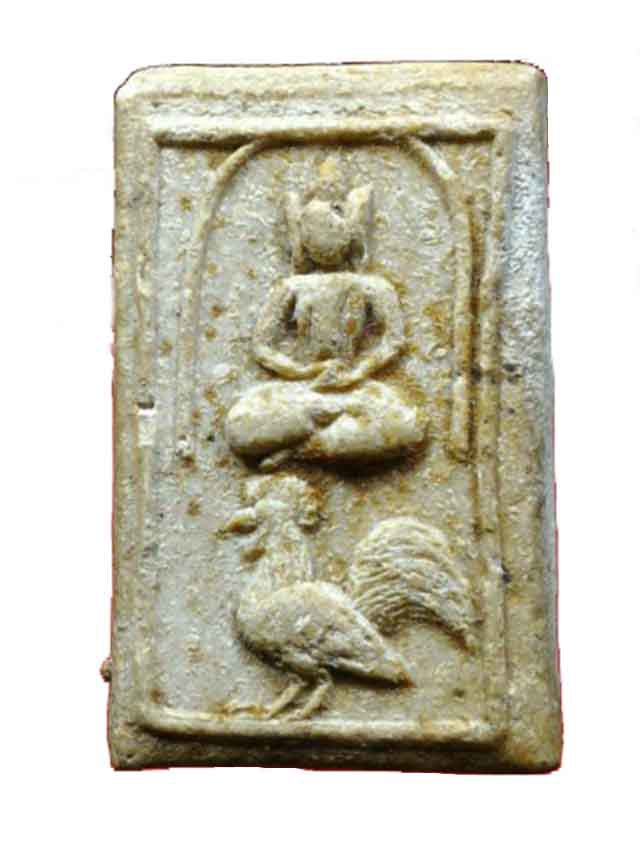
-
Pra Somdej Song Gai Buddha Riding Cockerel Amulet in Nuea Pong
Luang Por Chaeng was the second abbot of Wat Bang Pang, in Nontaburi, Bangkok, after his predecessor Luang Por Pra Atigarn Jaroen. His powerful psychic abilities to empower amulets was highly reputed within the Sangha on a National Level, and he was always an invited member of the greatest and most important ‘Putta Pisek’ (Buddha Abhiseka) blessing ceremonies in History, including the Great HIstorical Ceremony of empowerment of Magical Protective Yantra cloths and ‘Suea Yant’ Yantra shirts for the Thai Military.
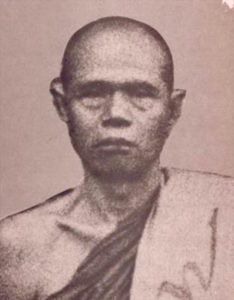
In the times of the second world and Indo-China wars, there were a few great Monks who stood out above all others for their Kong Grapan Chadtri, Klaew Klaad and Maha Ud Magic, whom the Thai Buddhist Folk of all Provinces knew and revered, no matter how remote the village. These great wartime Era Monks of great Magical Power were of course, Luang Por Jong, of Wat Na Tang Nork in Ayuttaya, Luang Por Jad of Wat Bang Grabao Luang Por and the great Luang Por Chaeng, of Wat Bang Pang, Luang Por Juan, and Luang Por Opasi
During the Indochina War, the Thai Military was ordered into battle, and a great ceremony to make Pha Prajiad Sipsee Pan Tong of Luang Por Chaeng, and Yantra Shirts of Luang Por Jad to protect them in the War, was held with a great blessing ritual, empowered by four of thee great monks, Luang Por Jong, Luang Por Chaeng, Luang Por Jad, and Luang Por Chuan.
The famous Pha Yant Prajiad were given to some soldiers to test with three point blank range shots, all of which failed. these Yantra cloths of Luang Por Chaeng, and the Yantra Shirts of Luang Por jad (Wat Bang Grabao) were worn into battle, and became the famous story of the French Military seeing Thai soldiers shot with bullets, who were knocked to the ground by the bullets, and immediately stood up again and went back into battle as if nothing had hit them. The French Military then called the Thai Military ‘Taharn Phi’ (Ghost Soldiers).
Below; Rian Luang Por Chaeng 2493 BE
-
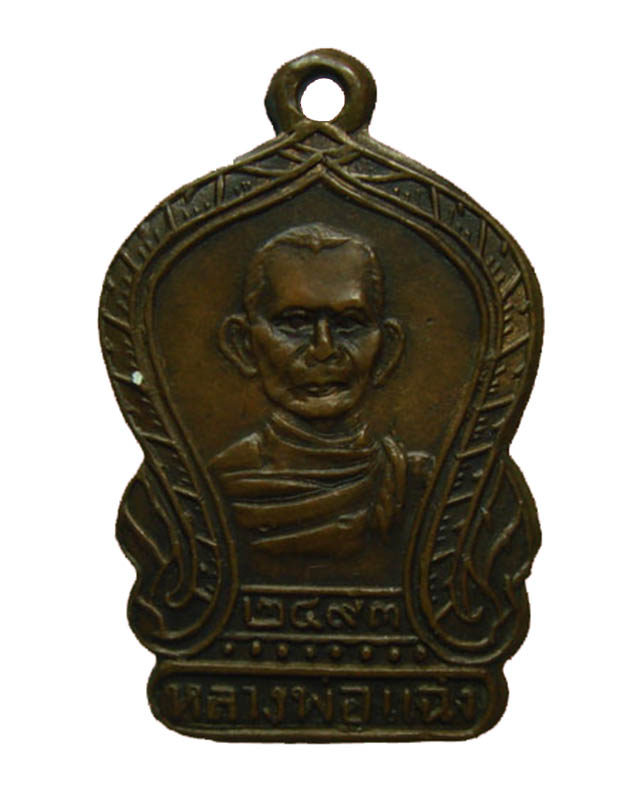
-
Rian Tong Daeng Luang Por Chaeng 2493 BE
-
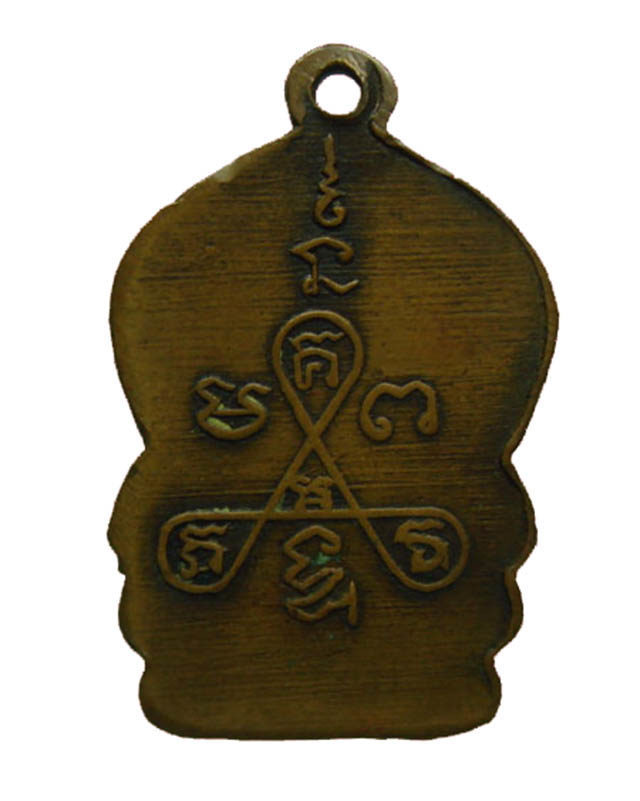
-
Rear Face Rian Tong Daeng Luang Por Chaeng 2493 BE
Luang Por Chaeng held the Wicha of a number of Kroo Ba Ajarn, who bestowed him with their lineage secrets, including the Great Luang Por Parn of Wat bang Hia (Wat Klong Dan), ;ph Khai of Wat Cherng Lane, Luang Phu Chay of Wat Panan Cherng,, Pra Kanajarn Say (Luang Por Say), Luang Phu Sukh, of Wat Pak Klong Makham Tao, Luang Por Parn of Wat Bang Nom Kho, and the Great Luang Por Jong of Wat Na Tang Nork.
As Luang Por Chaeng was alive and abbot of Wat Bang Pang, he would receive many devotees each day with numerous requests, none of whom he would refuse. Some would come for Blessings, some for Amulets, and others to heal their Illnesses, and some devotees who had heard of his Magical Prowess, came to beseech the secrets of his Wicha, to become Sorcerors themselves, and help those in their hometowns.
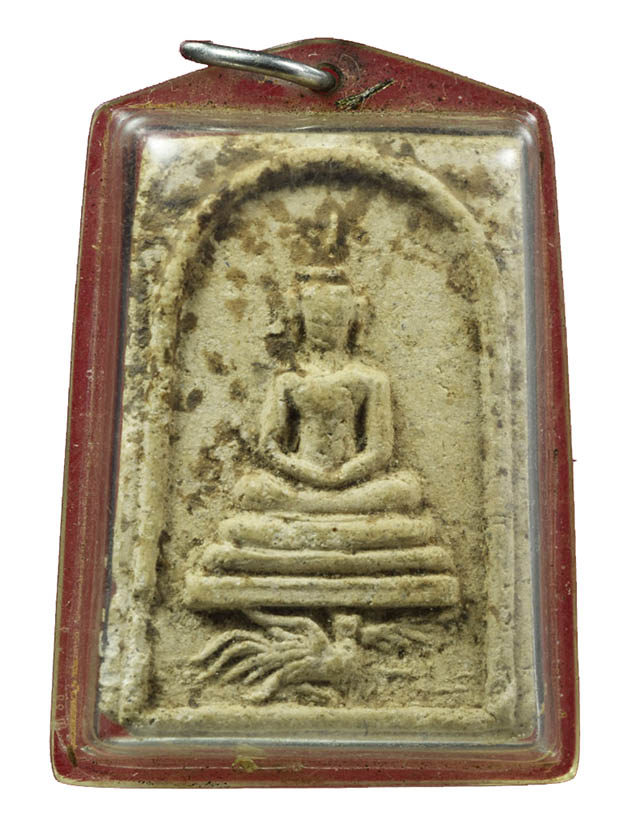
Somdej Song Gai Nuea Pong Luang Por Chaeng Wat Bang Pang 2484 BE
Luang Por Chaeng would bless, distribute amulets, and heal his devotees without exception. As to those devotees who beseeched apprenticeship to learn to cast spells with Kata Akom Incantations, Luang Por Chaeng would always first make the Looksit learn to develop their meditative skill, and to allow them to develop moral fibre and the five precepts. Only then, when they had risen above the base temptations, would he allow them the secrets of the Incantations, their sequences and methods. He would teach his students how to cure ailments and banish curses, and expunge ghosts and spirits from possessed souls.
Luang Por Chaeng had a great respect for Luang Por Parn of Wat Bang Nom Kho, and had received a lot of influence from him in the art of amulet making. So when he would make his amulets, he would often make models which resembled and paid reverence to the famous Pra Pim Pra Putta Jao Pratap Sadtw Buddha riding Animals amulets. He made original designs which resembled those of Wat Bang Nom Kho, with differences in design to distinguish them. This caused his amulets to become very popular, as this was the preferred type of amulet at the time in Central Thailand.
Below; Rian Pim Sam Chai 2497 BE – Luang Por Chaeng (Wat Bang Pang)
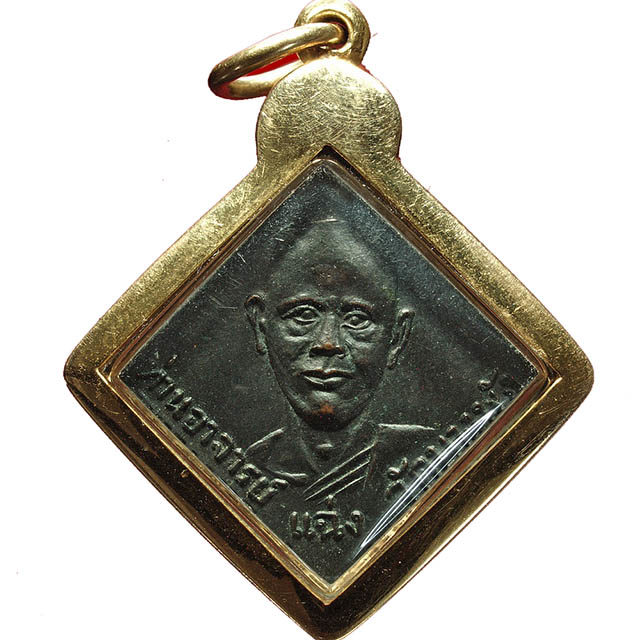
Rian Pim Sam Chay 2497 BE Luang Por Chaeng Wat Bang Pang
Luang Por Chaeng made a large number of different amulets, ranging from the Buddha riding animals, and other sacred powder amulets in many forms, in small (Pim Lek), medium (Pim Klang) and large (Pim Yai), Monk Coins, the world famous Pha Yant Tong Yantra Flags, Sai Sek blessed sandgrains, the highly preferred and now rare Pra Kring, and Pra Chaiyawat Loi Ongk Statuettes, Pra Prajam Wan (Birthday Buddha amulets), Nang Kwak beckoning lady, Pra Putta Kwak beckoning Buddha, Pra Sam Lia, (triangular amulet), and of course, his famous and extremely popular Pra Sivali metallic Loi Ongk Statuette amulets, which were made in ancient casting methods, in various forms and sizes, for Bucha on the altar as well as for wear as amulets.
Below; Rian Lor Pra Mokkhallana Maugdalyayana Arahant Coin Amulet 2485 BE
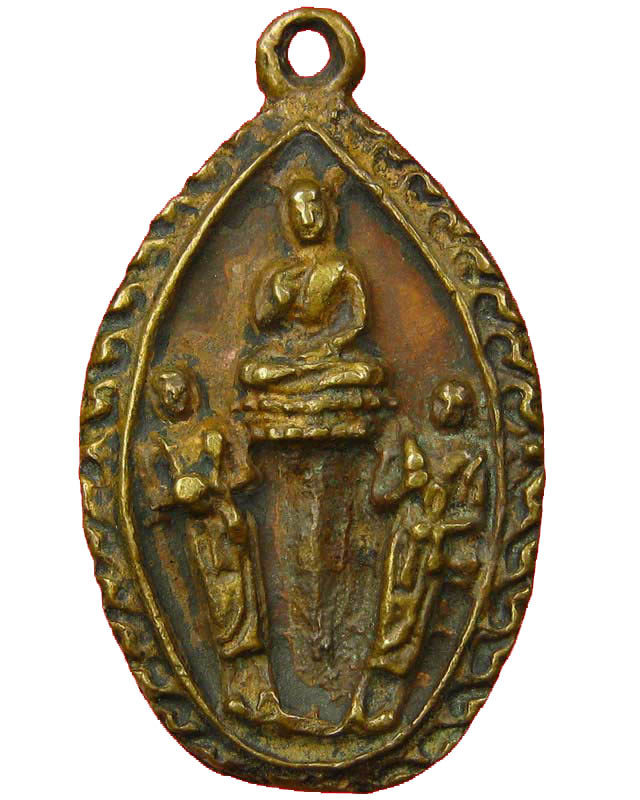
Rian Lor Pra Mokkhallana Saributr Buddha-Maugdalyayana-Sariputra Arahant Coin, from the year 2485 BE
His sacred powder amulets were made from a number of different Muan Sarn substance clays, including Puttakun (Yantra Powders), Nuea Din (Earthen Clay), and Pong Nam Man (Oily Herbal Powders). The amulet appreciation society and the aficionados tend to prefer the Pong Nam Man Oily powder models above the other Muan Sarn Sacred Powders, but there is not a very large difference in their price compared to the difference in their rarity.
In the year 2484 BE, Many devotees gathered to officially ask Luang Por Chaeng to make some powerful amulets to protect them during the War. So Luang Por Por Chaeng made a very large release of amulets of different types, with extreme power and effort after many years of preparation.

He empowered them for Kong Grapan Chadtri Klaew Klaad and Maha Ud to protect the Thai Buddhist people, in that time of Wars around South East Asia and the whole World. None of the multitudes of amulets blessed in the ceremony were rented out for money, instead, all were handed out for free to the devotees at the ceremony.
The Buddha riding animal amulets of Luang Por Chaeng are used as a second choice for those who do not possess the funds to obtain a Luang Por Parn Wat Bang Nom Kho model, and are said to be equally powerful protective amulets.
Below; Roop Lor Luang Por Chaeng Loi Ongk statuette released sometime around 2494 BE
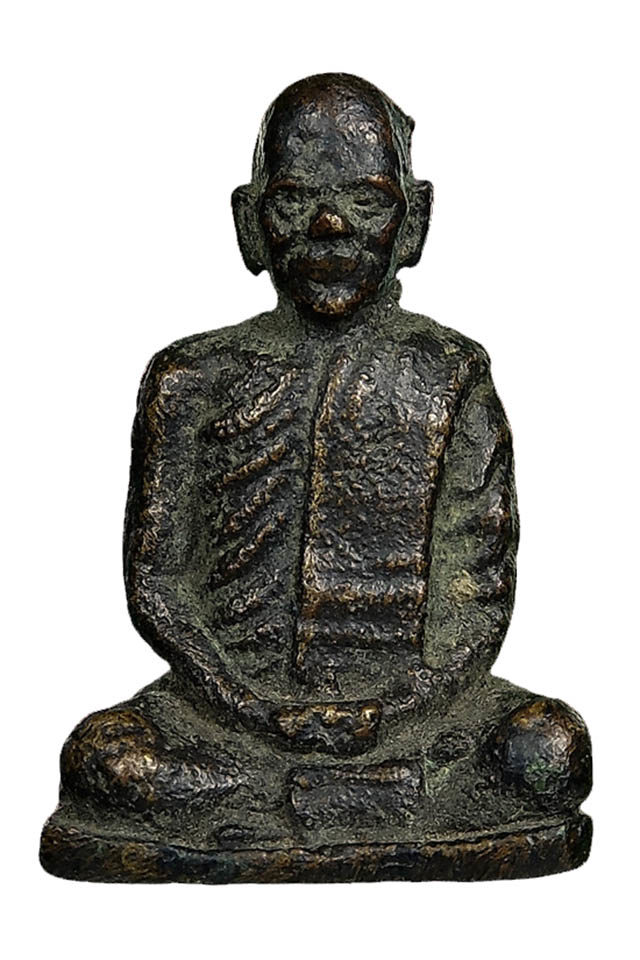
Roop Lor Luang Por Chaeng Loi Ongk
Luang Por Chaeng did not bake the clay in his edition, preferring to make them from an admixture which contained Poon Plueak Hoi (ground seashell), which results in a smoother and lighter colour and texture than Luang Por Parn’s clay models. Otherwise, his powder amulets contain the same 5 Sacred Yantra Powders Pong Bpathamang, Pong Puttakun, Pong Ittijae (sometimes called ‘Ittajae’), Pong Trinisinghae, and Pong Maharach. Luang Por Chaeng’s formula also included Gesorn flower pollens, Sai Sek enchanted sand, Khaw Suk cooked rice (from monks almsbowls)
Below; Luang Por Chaeng’s immensely rare and highly sought after ‘Khan Nam Mont Mongkol Gao’ Prayer Water Bowl
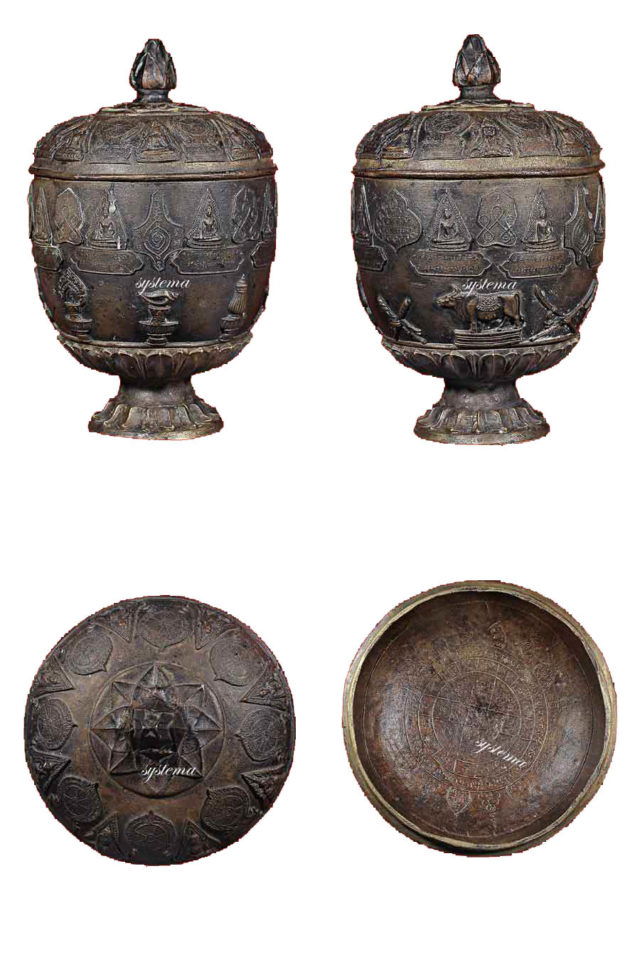
Khan Nam Mont Mongkol Gao Holy Water Receptacle Luang Por Chaeng
Luang Por Chaeng passed away peacefully on 26th July 2500 BE at the age of 72 years old, after 52 years in the ordained Sangha. His body was cremated in the year 2501 BE after being moved to Wat Makut Kasatriyaram. A series of ‘Rian Khaw Hlaam’ four sided Monk coins with the image of Luang Por Chaeng were handed out to the devotees during the cremation ceremony as a sacred memento of Luang Por Chaeng.
His amulets have become a classic preferred sacred religious artifact of the pre 2500 BE Era, and a guaranteed auspicious Buddhist Votive Tablet that can be treasured and revered for generations to come. A truly sacred ancient amulet from one of the most powerful masters of the World War II Era.
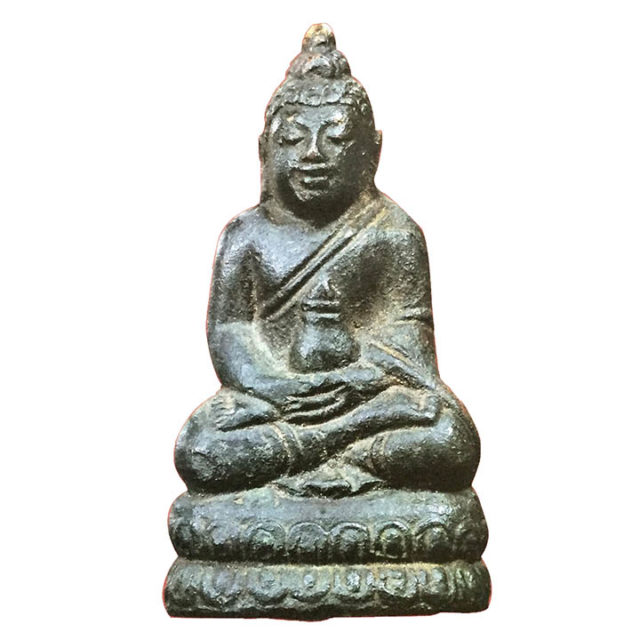
Pra Kring Prajam Krob Nam Mont Mongkol Gao Luang Por Chaeng – used to place within the Khan Nam Mont Mongkol Gao Holy Water Receptacle
Luang Por Chaeng was an important monk present called for the empowerment of amulets in many great ceremonies, particularly notable the Wat Rachabopit Indojin Ceremony of 2481 BE, considered to be the largest Blessing Ceremony of all History., the 25 Centuries of Buddhism Ceremony of 2500 BE (second of three largest ceremonies in History) and his presence was beseeched to assist in empowering the world famous historical edition of Pra Kring Wat Sutat.
